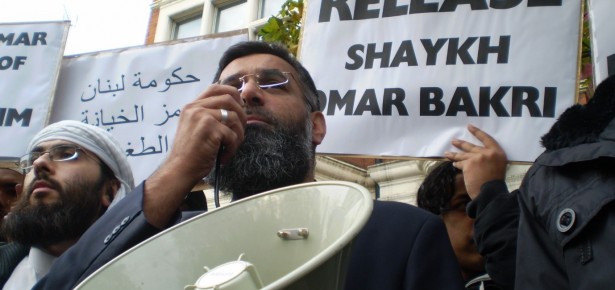
With his imminent release from prison for inviting support for the Islamic State in Iraq and Syria (ISIS), Anjem Choudary and his network of supporters are back in the spotlight. As I write in my forthcoming book, Choudary and his fellow al-Muhajiroun (Arabic for “the Emigrants”) activists have struggled to create the Islamic caliphate in Britain for years through preaching, demonstrations, and other forms of confrontational activism that push the boundaries of free speech and association. While most activists follow a “covenant of security” that keeps them from engaging in violent attacks in Britain, numerous supporters have rejected this covenant and escalated to political violence.
Despite, or perhaps because of, all the media attention al-Muhajiroun has received over the years, the activist network remains poorly understood. From 2010 to 2015 I pushed beyond the headlines to conduct ninety-seven interviews with forty-eight activists. These respondents included leading, veteran, and rank-and-file activists. They provided many insights into how the network recruited supporters and performed its high-risk activism under challenging circumstances. They also explained why they decided to join the network, how they learned to become “committed insiders,” and how they adapted their activism in response to counter-terrorism pressure.
I also interviewed numerous activists who left the network after years of involvement. These former activists were often reluctant to discuss their youthful experimentation in al-Muhajiroun, which made them hard to access and interview. Fortunately, when they agreed to meet they were full of rich insights about their own journeys to—and from—the activist network. They provided critical details on internal matters I could not get from current supporters, such as how they funded their activism, and the attempted overthrow of Choudary by activists in Whitechapel. They also explained how they tired of their activism, grew frustrated with network leaders, and eventually decided to leave al-Muhajiroun, without escalating to political violence.
Beyond the interviews, I spent hundreds of hours interacting with activists at kebab shops and their indoctrination centers and watching them preach and protest on the streets of London. Hanging out with “the brothers” led to greater trust and rapport, resulting in more candid interviews, especially when I interviewed the same activist more than once. Watching them in action allowed me to ground my findings on what activists actually did—and not just what they told me.
The result of all this soaking and poking is the first ethnographic study of a Salafi-jihadi network based in Europe that has been implicated in political violence and sending fighters to ISIS and other militant groups. The Islamic State in Britain highlights the network’s many connections to political violence—and goes beyond them to explain how al-Muhajiroun actually works. I also explore the larger implications of my research and challenge conventional wisdom on Islamic extremism, online radicalization, and countering violent extremism (CVE) programs.
Some cases are important enough to understand on their own. Al-Muhajiroun is one such case. Yet my interest in the activist network is not merely academic. Unless we understand why some young men and women in Britain, and the West more broadly, embrace extremist ideologies and why a smaller subset of them mobilize to violence, we are not likely to prevent these processes from continuing in the future. This has consequences for all of us.
Latest Comments
Have your say!